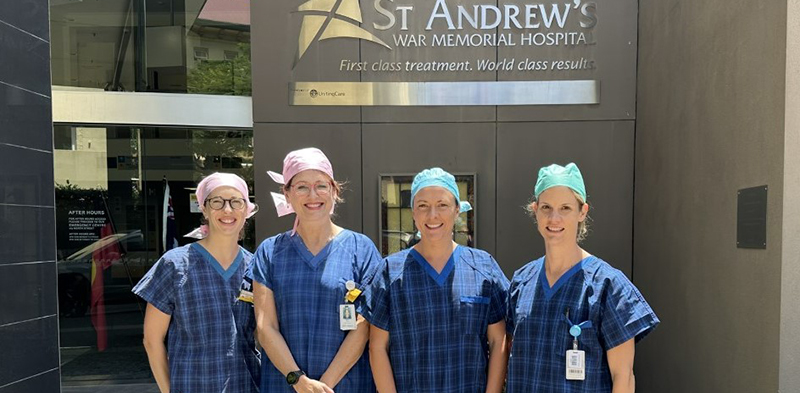
Designated by the United Nations, each year on 11 February is International Day of Women and Girls in Science.
The day aims to accelerate gender equality and improve access to and participation in science for women and girls. It’s also an important day to celebrate the females around us who are leading the way in science.
To mark the day, we caught up with St Andrew’s cardiac scientist coordinator, Katrina Stewart, to find out about a day in the life of a cardiac scientist at St Andrew’s.
Read our Fast Five Q & A with Katrina to learn more about this niche area of healthcare and science, and find out her advice for women and girls interested in a cardiac science career.
Fast Five
1. What does a cardiac scientist do?
A cardiac scientist specialises in interpretation of cardiac waveforms, ECGs and signals from directly within the heart. At St Andrew’s, our team of cardiac scientists perform monitoring, interpretation and diagnosis during cardiac procedures, and assist in diagnosis and treatment.
We are based in the Cardiac Catheter Theatres and are involved in Transcatheter Aortic Valve Implantation (TAVI) procedures, stent placements and angiograms. We also assist in implantation, interrogation and programming of pacemakers and implantable cardioverter-defibrillators (ICDs), and undertake electrophysiology studies, a test which looks at the heart’s electrical system and is used to diagnose and treat abnormal heart rhythms with ablation.
2. Describe a day in the life of a cardiac scientist at St Andrew’s
A normal day involves getting patients settled in for their procedure or test, setting up equipment and connecting patients up to the equipment, and troubleshooting. We spend our day interpreting cardiac signals and working alongside our multi-disciplinary team to achieve a great outcome for our patients.
3. What led you to a career in science?
I always had a fascination with how things work. It’s such an evolving field and in the past 10 years since I’ve been working at St Andrew’s, the technical progress has been so fast, especially in electrophysiology. The industry also provides continual opportunities to learn, and like most people in healthcare, I’m here because I want to help people and make a difference.
4. What do you love most about working in science and healthcare?
It’s a fascinating field, I love being busy and the constant evolution. Every day is different and every patient is different. Also, a lot of the joy comes from achieving success with our patients and seeing them get the treatment they need.
5. What advice would you give to young girls considering a career in science?
I would say get in and get the experience, especially during your undergraduate study (in a degree with a strong science and human physiology focus). The area of cardiac science is a niche field, so it’s important to gain lots of experience while studying. Most cardiac scientists start out in a non-invasive field and then continue with on-the-job training and post graduate qualifications in either pacing and electrophysiology or echocardiography. But also remember the are many different pathways to where you want to be. If you are passionate, a team player and enjoy a dynamic environment you will love a career in cardiac science (physiology).